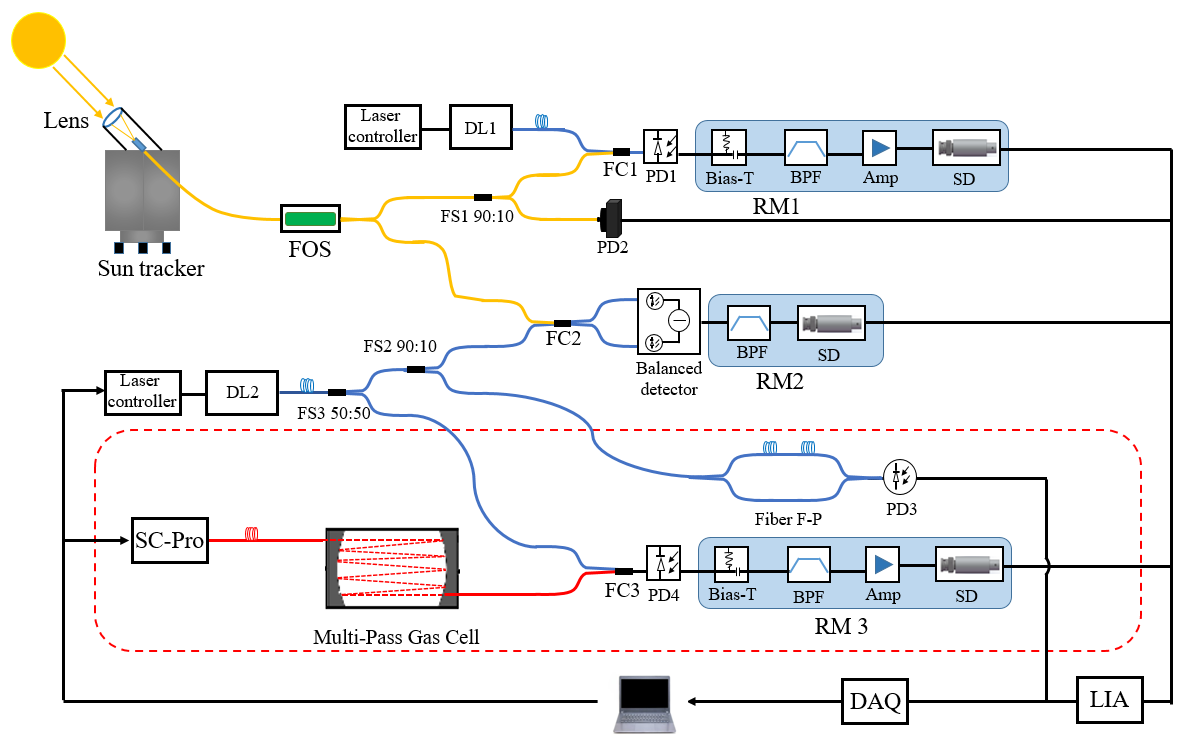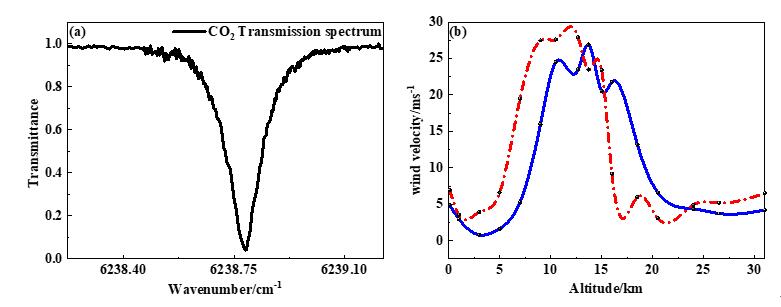
A research team led by professor GAO Xiaoming from Hefei Institutes of Physical Science (HFIPS) of Chinese Academy of Sciences (CAS) developed a near-infrared (NIR) dual-channel oxygen-corrected laser heterodyne radiometer (LHR) in the ground-based solar occultation mode recently, which was for measuring vertical profile of wind field in the troposphere and low stratosphere.
The result has published in Optics Express.
The LHR has a high spectral resolution, which can effectively detect slight Doppler frequency shifts caused by the wind field. Combining the atmospheric transmission spectrum, the LHR can obtain vertical profiles of horizontal winds and atmospheric column concentrations along the line of sight through spectral inversion.
In this study, the team designed a near-infrared laser heterodyne spectrometer based on oxygen correction, and measured the atmospheric O2 and CO2 transmission spectra.
Using the constrained Nelder-Mead simplex method based on the atmospheric O2 transmission spectrum, they corrected the atmospheric temperature and pressure distribution, and combined the optimal estimation algorithm to invert the vertical profile of the atmospheric wind field with an accuracy of approximately ±2.5 m/s.
The research results show that oxygen-corrected LHR, as a portable and miniaturized measuring instrument, has broad application potential in wind field detection.
This research was funded by the National Natural Science Foundation of China, the National Key R&D Program, and the Director's Special Pre-Research Fund, among others.

Schematic diagram of near-infrared laser heterodyne radiometer (Image by LI Jun)

Fig (a). the measured atmospheric transmission spectrum ;Fig (b).the prior wind profile (blue curve) and the inverted wind profile (red dotted line). (Image by LI Jun)